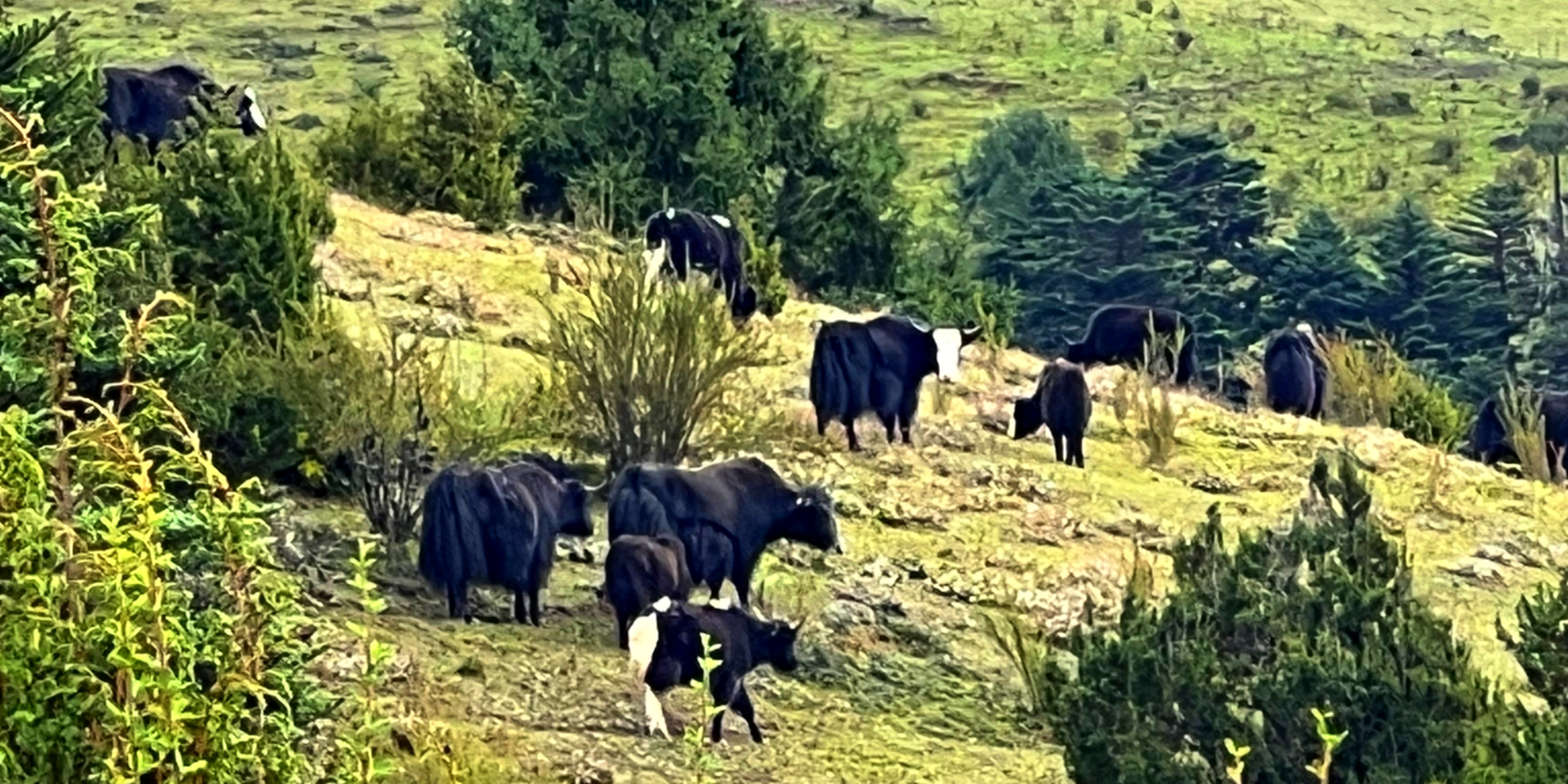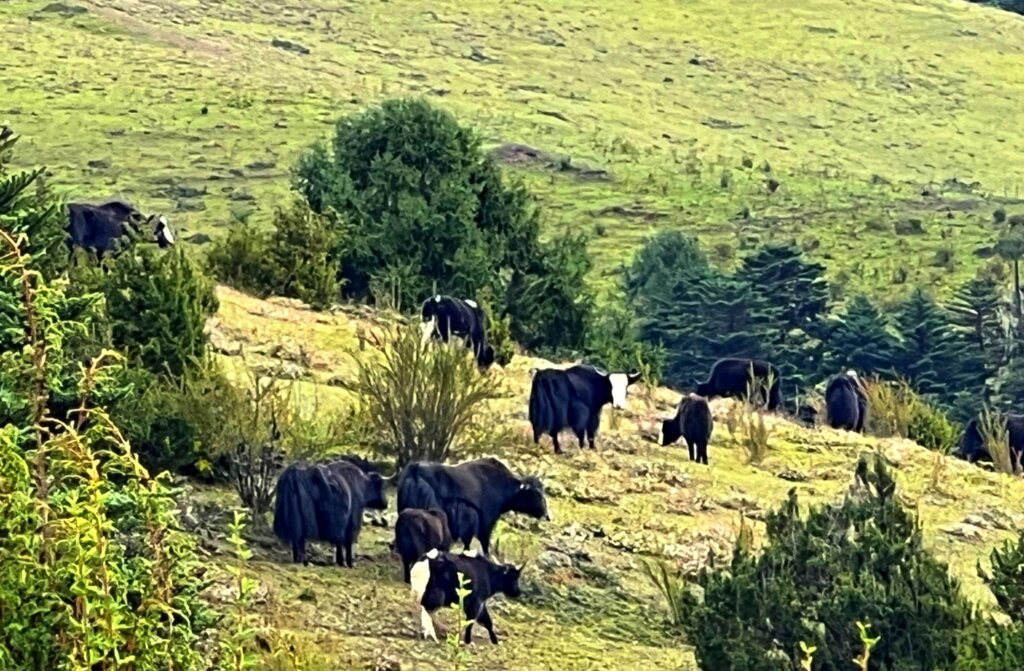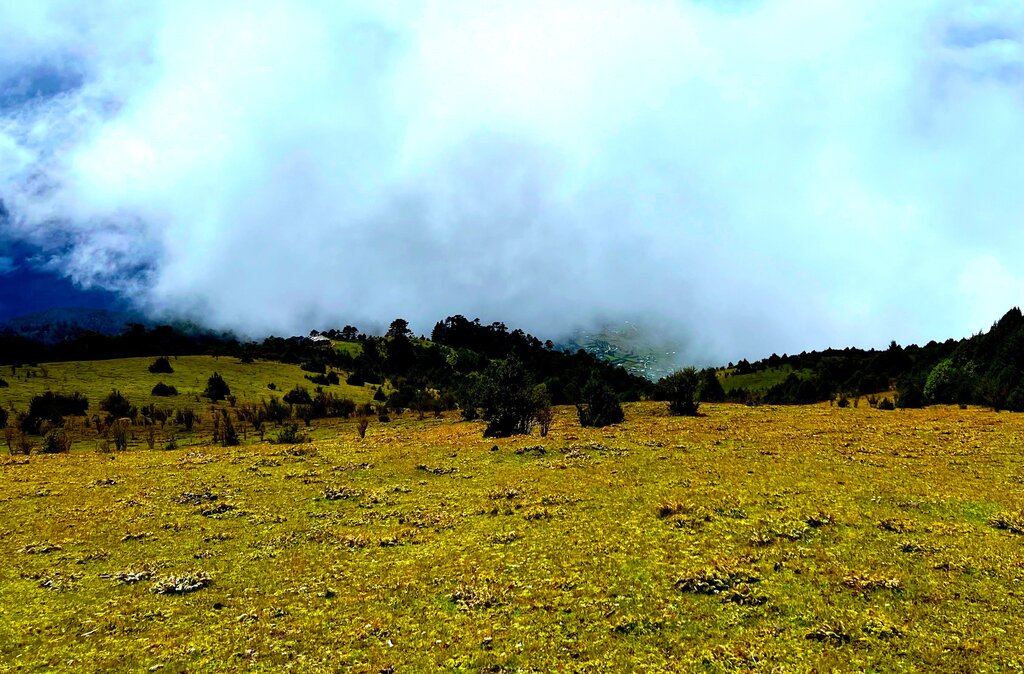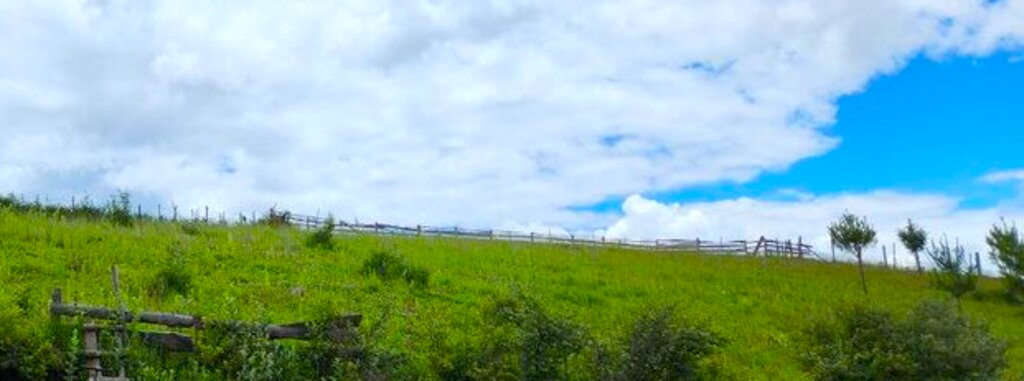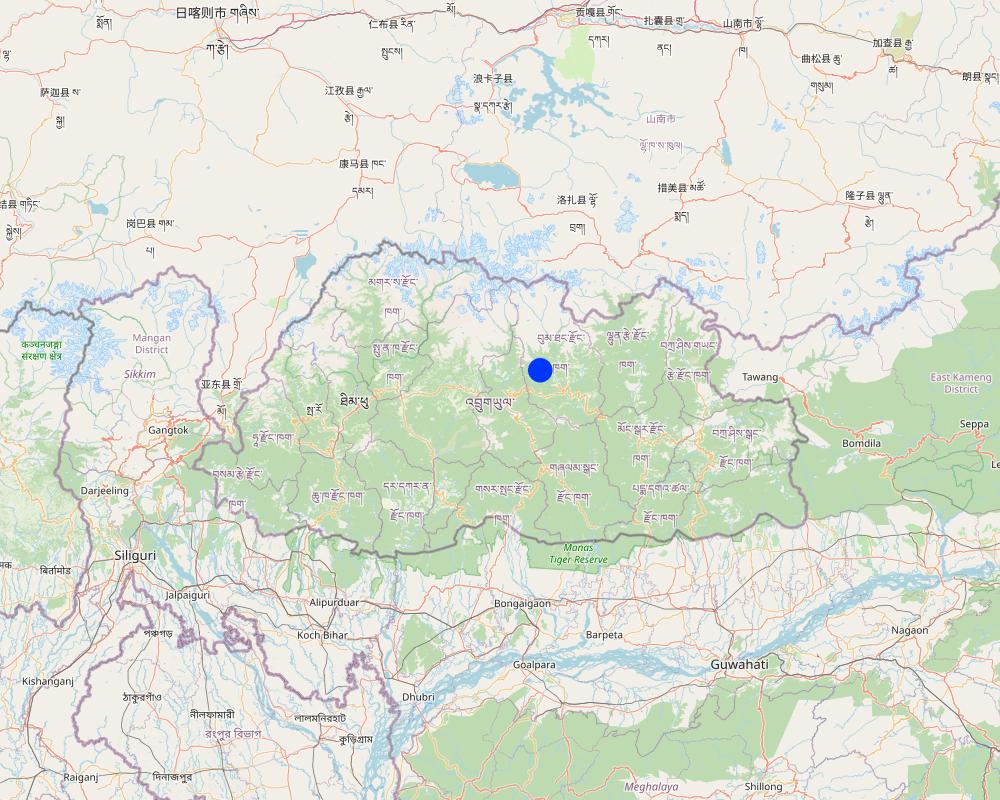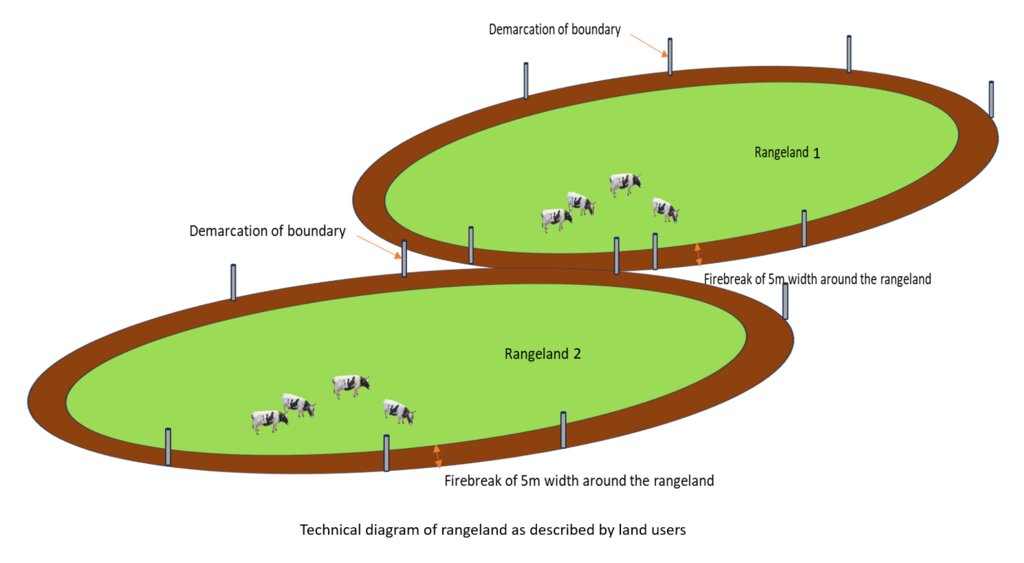Managed Burning of Rangeland [不丹]
- 创建:
- 更新:
- 编制者: ONGPO LEPCHA
- 编辑者: chenga Tshering
- 审查者: William Critchley, Rima Mekdaschi Studer
Tsamdro Mey Tshaezin Tangtey Dzinchong Baeni (ཙྭ་འབྲོག་མེ་ཚད་འཛིན་བཏང་སྟེ་འཛིན་སྐྱོང་འབད་ནི།)
technologies_6855 - 不丹
查看章节
全部展开 全部收起1. 一般信息
1.2 参与该技术评估和文件编制的资源人员和机构的联系方式
关键资源人
土地使用者:
Phurba
Dhur community
不丹
土地使用者:
Phuntsho Kelzang
Dhur community
不丹
有助于对技术进行记录/评估的项目名称(如相关)
Strengthening national-level institutional and professional capacities of country Parties towards enhanced UNCCD monitoring and reporting – GEF 7 EA Umbrella II (GEF 7 UNCCD Enabling Activities_Umbrella II)有助于对技术进行记录/评估的机构名称(如相关)
National Soil Services Centre, Department of Agriculture, Ministry of Agriculture & Livestock (NSSC) - 不丹1.3 关于使用通过WOCAT记录的数据的条件
编制者和关键资源人员接受有关使用通过WOCAT记录数据的条件。:
是
1.4 所述技术的可持续性声明
这里所描述的技术在土地退化方面是否存在问题,导致无法被认为是一种可持续的土地管理技术?:
否
注释:
While this practice may be criticised on the basis of reducing biodiversity and leading to some GHG losses, it is an important land management practice that has certain specific benefits including making the land more productive.
2. SLM技术的说明
2.1 技术简介
技术定义:
Burning of rangeland (“tsamdro”) is a traditional management practice adopted by highlanders to control unpalatable grass and shrub species. This helps them produce adequate fodder for their yaks, cattle, horses, and sheep by creating a favorable environment for palatable grasses.
2.2 技术的详细说明
说明:
The practice of burning rangeland (“tsamdro”) is a longstanding tradition among highlanders, whose livelihoods depend on livestock including yaks, cattle, horses and sheep. It is mainly practiced by transhumant communities or individuals who rely on livestock for their livelihoods. They follow a migratory livestock husbandry system that takes them from the highlands to the lowlands dependent on the availability of fodder resources, while simultaneously avoiding the extremes of climate. In the past, rangeland was allocated to individuals, communities, or religious bodies through payment for a minimal annual grazing permit, granting grazing rights. When pasture was scarce, controlled fires were intentionally set in specific areas to rejuvenate the rangeland with fresh grass and control unpalatable grasses and shrubs. For instance, the transhumant nomadic communities of Dhur village, Choekhor Gewog, in Bumthang have adopted the practice of burning rangeland. This practice is implemented during the winter months, dependent on weather, vegetation status, and wind patterns. Rooted in traditional knowledge and cultural practices, the practice is slowly diminishing nowadays due to environmental concerns and labour shortages as young nomads migrate - seeking better employment in towns.
The technique serves multiple purposes. These include promoting the growth of fresh and palatable pasture rich in protein, increasing plant diversity, adding nutrients to the soil through ash, and reducing dead plant material that inhibits new plant growth. Additionally, rangeland burning contributes to the control of livestock pests, especially ticks and flies. While rangeland burning is a straightforward process, it requires careful planning of time and location, creation of fire breaks to prevent uncontrollable spread, and leaving the land fallow for 2 to 3 years after burning to encourage grass growth.
Land users appreciate the technology for reducing their workload in collecting wild fodder grasses, enhancing visibility by removing trees and shrubs, and reducing the risk of predators. However, risks include the potential for uncontrolled fires if not properly managed and harm to the ecosystem and biodiversity in and around the pastureland. Burning also contributes to the loss of carbon dioxide (a greenhouse gas) to the atmosphere.
2.3 技术照片
2.5 已应用该技术的、本评估所涵盖的国家/地区/地点
国家:
不丹
区域/州/省:
Bumthang Dzongkhag (District)
有关地点的进一步说明:
Dhur village, Choekhor Gewog (Block)
具体说明该技术的分布:
- 均匀地分布在一个区域
如果不知道精确的区域,请注明大致覆盖的区域:
- 0.1-1 平方千米
技术现场是否位于永久保护区?:
否
注释:
The total area of rangeland owned was 70 acres (from the two individual who the enumerators interviewed)
Map
×2.6 实施日期
如果不知道确切的年份,请说明大概的日期:
- 50多年前(传统)
2.7 技术介绍
详细说明该技术是如何引入的:
- 作为传统系统的一部分(> 50 年)
注释(项目类型等):
Traditional practice of burning rangeland was adopted by the transhumant nomadic community of Dhur village called the Bjobs since time immemorial.
3. SLM技术的分类
3.1 该技术的主要目的
- 改良生产
3.2 应用该技术的当前土地利用类型
同一土地单元内混合使用的土地::
是
具体说明混合土地使用(作物/放牧/树木):
- 林牧业

牧场
粗放式放牧:
- 游牧
- Pasture grass is natural grown and livestock are allowed to graze on it
- Yak
是否实行作物与牲畜的综合管理?:
否
产品和服务:
- 肉类
- 奶类
- 外皮/兽皮
品种:
牛 - 奶制品
计数:
50
品种:
牛 - 奶制品
计数:
55

森林/林地
- (半天然)天然森林/林地
(半天然)天然森林/林地:具体说明管理类型:
- 清除枯木/剪枝
(半)天然林类型:
- 温带山地系统天然植被
- Pine, Chirpine, Fir and Cypress
以上的树木是落叶树还是常绿树?:
- 常绿
产品和服务:
- 自然保持/保护
3.3 由于技术的实施,土地使用是否发生了变化?
由于技术的实施,土地使用是否发生了变化?:
- 否(继续问题3.4)
3.4 供水
该技术所应用土地的供水:
- 雨养
注释:
There are water sources in their summer pasture lands; however, for the growth of the pasture grass, water supply is mostly dependent on rain.
3.5 该技术所属的SLM组
- 畜牧业和牧场管理
3.6 包含该技术的可持续土地管理措施

管理措施
- M5:物种组成的控制/变化
注释:
The main SLM measure includes the burning of rangeland to regenerate palatable grass species. In the process of burning invasive species are killed, and the desired clearing of weeds is achieved finally resulting in an environment with fresh grasses for livestock.
3.7 该技术强调的主要土地退化类型

其它
具体说明:
Revitalise and regenerate growth of palatable grass species to be used for livestock grazing
注释:
This technology do not address land degradation issue .
3.8 防止、减少或恢复土地退化
具体数量名该技术与土地退化有关的目标:
- 不适用
注释:
It is used to regenerate and revitalise growth of palatable grass species.
4. 技术规范、实施活动、投入和成本
4.1 该技术的技术图纸
4.2 有关投入和成本计算的一般信息
具体说明成本和投入是如何计算的:
- 每个技术区域
注明尺寸和面积单位:
1 acres
如果使用本地面积单位,注明转换系数为1公顷(例如1公顷=2.47英亩):1公顷=:
0.4 hectare
其它/国家货币(具体说明):
Bhutanese Ngultrum
如相关,注明美元与当地货币的汇率(例如1美元=79.9巴西雷亚尔):1美元=:
82.08
注明雇用劳工的每日平均工资成本:
1200
4.3 技术建立活动
| 活动 | 时间(季度) | |
|---|---|---|
| 1. | Creating fire break around the pasture land | During the winter season |
| 2. | Burning of the pasture land | During the winter season |
| 3. | After burning the land is left fallow for the pasture land to establish | Kept fallow for the next 2 to 3 years |
4.4 技术建立所需要的费用和投入
| 对投入进行具体说明 | 单位 | 数量 | 单位成本 | 每项投入的总成本 | 土地使用者承担的成本% | |
|---|---|---|---|---|---|---|
| 劳动力 | Labours | person-days | 9.0 | 1200.0 | 10800.0 | 98.0 |
| 设备 | grass cutter | No | 1.0 | 15000.0 | 15000.0 | |
| 设备 | Pipe | Bundle | 1.0 | 3000.0 | 3000.0 | |
| 设备 | Spade | No | 3.0 | 500.0 | 1500.0 | |
| 技术建立所需总成本 | 30300.0 | |||||
| 技术建立总成本,美元 | 369.15 | |||||
注释:
The cost for the pasture burning is very minimal and even the labours normally are from their own household.
4.5 维护/经常性活动
| 活动 | 时间/频率 | |
|---|---|---|
| 1. | Land is left fallow | For 2 to 3 years |
注释:
The rangeland after burning is left fallow for the next 2 to 3 years. During that time, the land user would graze their yaks in other pasture land.
4.6 维护/经常性活动所需要的费用和投入(每年)
注释:
Expenditure not incurred for the maintenance of the technology.
4.7 影响成本的最重要因素
描述影响成本的最决定性因素:
Labour cost
5. 自然和人文环境
5.1 气候
年降雨量
- < 250毫米
- 251-500毫米
- 501-750毫米
- 751-1,000毫米
- 1,001-1,500毫米
- 1,501-2,000毫米
- 2,001-3,000毫米
- 3,001-4,000毫米
- > 4,000毫米
有关降雨的规范/注释:
The data was used from the National Center for Hydrology and Meteorology from the nearest weather station.
注明所考虑的参考气象站名称:
https://www.nchm.gov.bt/home/pageMenu/906
农业气候带
- 半干旱
Cool temperate zone
5.2 地形
平均坡度:
- 水平(0-2%)
- 缓降(3-5%)
- 平缓(6-10%)
- 滚坡(11-15%)
- 崎岖(16-30%)
- 陡峭(31-60%)
- 非常陡峭(>60%)
地形:
- 高原/平原
- 山脊
- 山坡
- 山地斜坡
- 麓坡
- 谷底
垂直分布带:
- 0-100 m a.s.l.
- 101-500 m a.s.l.
- 501-1,000 m a.s.l.
- 1,001-1,500 m a.s.l.
- 1,501-2,000 m a.s.l.
- 2,001-2,500 m a.s.l.
- 2,501-3,000 m a.s.l.
- 3,001-4,000 m a.s.l.
- > 4,000 m a.s.l.
说明该技术是否专门应用于:
- 不相关
5.3 土壤
平均土层深度:
- 非常浅(0-20厘米)
- 浅(21-50厘米)
- 中等深度(51-80厘米)
- 深(81-120厘米)
- 非常深(> 120厘米)
土壤质地(表土):
- 中粒(壤土、粉土)
表土有机质:
- 高(>3%)
5.4 水资源可用性和质量
地表水的可用性:
好
水质(未处理):
良好饮用水
水质请参考::
地表水
水的盐度有问题吗?:
否
该区域正在发生洪水吗?:
否
5.5 生物多样性
物种多样性:
- 低
栖息地多样性:
- 低
关于生物多样性的注释和进一步规范:
Since, only grasses are grown in the land, the species and habitat diversity is very low. Other factors that determine low diversity could be due to low temperature.
5.6 应用该技术的土地使用者的特征
定栖或游牧:
- 游牧的
生产系统的市场定位:
- 混合(生计/商业)
非农收入:
- > 收入的50%
相对财富水平:
- 丰富
个人或集体:
- 个人/家庭
机械化水平:
- 手工作业
性别:
- 男人
土地使用者的年龄:
- 老年人
说明土地使用者的其他有关特征:
The land users were currently retired and had their sons and daughters to take care of their yaks.
5.7 应用该技术的土地使用者使用的平均土地面积
- < 0.5 公顷
- 0.5-1 公顷
- 1-2 公顷
- 2-5公顷
- 5-15公顷
- 15-50公顷
- 50-100公顷
- 100-500公顷
- 500-1,000公顷
- 1,000-10,000公顷
- > 10,000公顷
这被认为是小规模、中规模还是大规模的(参照当地实际情况)?:
- 大规模的
注释:
One of the interviewees had 50 acres of pasture land, while the other had 20 acres of pasture land.
5.8 土地所有权、土地使用权和水使用权
土地所有权:
- 个人,有命名
土地使用权:
- 个人
用水权:
- 自由进入(无组织)
土地使用权是否基于传统的法律制度?:
是
具体说明:
The traditional legal system in our country is as per the land act and rules and regulations which dictate the land use in the country.
5.9 进入服务和基础设施的通道
健康:
- 贫瘠
- 适度的
- 好
教育:
- 贫瘠
- 适度的
- 好
技术援助:
- 贫瘠
- 适度的
- 好
就业(例如非农):
- 贫瘠
- 适度的
- 好
市场:
- 贫瘠
- 适度的
- 好
能源:
- 贫瘠
- 适度的
- 好
道路和交通:
- 贫瘠
- 适度的
- 好
饮用水和卫生设施:
- 贫瘠
- 适度的
- 好
金融服务:
- 贫瘠
- 适度的
- 好
注释:
Access to these services and infrastructure were based on their winter home, during the summer they would travel to the more higher altitudes where none of these services are available except for drinking water.
6. 影响和结论性说明
6.1 该技术的现场影响
社会经济效应
生产
饲料生产
注释/具体说明:
The land users shared that fodder production is relatively higher when practicing rangeland burning.
饲料质量
注释/具体说明:
When comparing cut grass and grass in burned rangeland, the land users prefer the grass in the burned rangeland.
畜牧生产
注释/具体说明:
According to the land users, milk yield is better and higher from cattle fed on grasses from rangeland, which was burnt previously.
生产故障风险
注释/具体说明:
Land user also shared that burning rangeland provides enough food for their livestock which is sufficient throughout the year. This reduces the risk of production due to a shortage of grasses/feed.
收入和成本
农业收入
注释/具体说明:
Farm income is higher when compared to dairy supplemented with commercial feed in the winter. In addition, the establishment cost and implementation cost is also very low.
工作量
注释/具体说明:
According to the nomads, burning rangeland is easier and requires less amount of energy for establishment.
社会文化影响
SLM/土地退化知识
注释/具体说明:
Land users observed healthy grasses growing after burning rangeland. This indicated that burning also adds to soil fertility.
生态影响
生物多样性:植被、动物
植被覆盖
注释/具体说明:
Vegetation cover is reduced because of this technology. This is because shrubs and trees are intentionally removed from the rangeland.
植物多样性
注释/具体说明:
Plant diversity is also very minimal since tree saplings and shrubs are burned leaving only the pasture grass to grow on the land
栖息地多样性
注释/具体说明:
Only grass is maintained as part of the technology. Habitat diversity is very low as trees and shrubs which also serve as habitats for many insects and arthropods are removed from rangeland.
害虫/疾病控制
注释/具体说明:
It is reported in the literature that rangeland burning can reduce pest like tick and flies.
6.2 该技术的场外影响已经显现
温室气体的影响
注释/具体说明:
Burning of the rangeland leads to the production of several greenhouse gases, inevitably.
6.3 技术对渐变气候以及与气候相关的极端情况/灾害的暴露和敏感性(土地使用者认为的极端情况/灾害)
渐变气候
渐变气候
| 季节 | 增加或减少 | 该技术是如何应对的? | |
|---|---|---|---|
| 年温度 | 增加 | 好 | |
| 年降雨量 | 减少 | 好 |
气候有关的极端情况(灾害)
气象灾害
| 该技术是如何应对的? | |
|---|---|
| 局地暴雨 | 好 |
| 局地雷暴 | 非常好 |
| 局地雹灾 | 好 |
| 局地雪暴 | 好 |
| 局地风暴 | 非常好 |
气候灾害
| 该技术是如何应对的? | |
|---|---|
| 寒潮 | 好 |
| 干旱 | 好 |
| 森林火灾 | 不好 |
水文灾害
| 该技术是如何应对的? | |
|---|---|
| 滑坡 | 好 |
6.4 成本效益分析
技术收益与技术建立成本相比如何(从土地使用者的角度看)?
短期回报:
非常积极
长期回报:
非常积极
技术收益与技术维护成本/经常性成本相比如何(从土地使用者的角度看)?
短期回报:
非常积极
长期回报:
非常积极
注释:
Since minimal cost goes into implementing the technology, the income earned from it is high. Further, the land users also earn income from cordyceps, therefore, off farm income is very high than from dairy produced from the cattles.
6.5 技术采用
- 11-50%
如若可行,进行量化(住户数量和/或覆盖面积):
17 households from a total of 105 household in the village are land users and practice rangeland burning.
在所有采用这项技术的人当中,有多少人是自发的,即未获得任何物质奖励/付款?:
- 91-100%
注释:
Burning of the rangeland has been practiced by all the land users for a very long period of time.
6.6 适应
最近是否对该技术进行了修改以适应不断变化的条件?:
否
6.7 该技术的优点/长处/机会
| 土地使用者眼中的长处/优势/机会 |
|---|
| Feed security for livestock: Land users have high-quality grasses in enough quantity to feed his/her cattle for the seasons. |
| The land is revitalized for better growth of the pasture grass: fresh and healthy grasses growing after the burning of rangeland are rich in protein and enhanced digestibility |
| Less workload: Implementation of this technology is easy and land users have enough time to di off-farm activities. |
| 编制者或其他关键资源人员认为的长处/优势/机会 |
|---|
| Rangeland burning helps control the spread of woody plants and invasive species. |
| Rangeland burning has cultural significance and is deeply rooted in traditional knowledge and practices. |
6.8 技术的弱点/缺点/风险及其克服方法
| 土地使用者认为的弱点/缺点/风险 | 如何克服它们? |
|---|---|
| Can lead to forest fire | Land users should create fire break to prevent the fire from becoming uncontrollable |
| Affect ecosystem and biodiversity in and around the pasture land | Using better varieties of pasture grass. |
| 编制者或其他关键资源人员认为的弱点/缺点/风险 | 如何克服它们? |
|---|---|
| Intense fires or repeated burning in the same areas can lead to increased soil erosion. | Implementing proper rotational burning practices, where different areas of the rangeland are burned in a planned sequence. |
| Rangeland burning can produce smoke and affect air quality and add carbon dioxide (green house gases) to the atmosphere. | Burns should be carried out under favorable weather conditions, taking into account wind direction and dispersion patterns. |
7. 参考和链接
7.1 信息的方法/来源
- 实地考察、实地调查
One household as representative of other household involved.
- 与土地使用者的访谈
Two individuals
(现场)数据是什么时候汇编的?:
17/07/2023
7.2 参考可用出版物
标题、作者、年份、ISBN:
Mapiye, C., Mwale, M., Chikumba, N. & Chimonyo, M. (2008). Fire as a Rangeland Management Tool in the Savannas of Southern Africa. Tropical and Subtropical Agroecosystems, 8, 115-124.
可以从哪里获得?成本如何?
https://www.redalyc.org/pdf/939/93980201.pdf
标题、作者、年份、ISBN:
Sabiiti, E. N., Wamara, J. B., Ogen-Odoi, A. A. & Wein, R. W. (1992). The Role of Fire in Pasture and Rangeland Management. Nomadic Peoples, 21, 107-110.
可以从哪里获得?成本如何?
https://www.jstor.org/stable/43123378
7.3 链接到网络上的相关信息
标题/说明:
Management Strategies for Rangeland and Introduced Pastures
URL:
https://extension.okstate.edu/fact-sheets/management-strategies-for-rangeland-and-introduced-pastures.html
标题/说明:
Fire as a Tool in Land Management
URL:
https://rangelandsgateway.org/topics/rangeland-ecology/fire-tool-land-management
7.4 一般注释
Some questions in the questionnaire were not related to Bhutanese context. So we left out those question without any response.
链接和模块
全部展开 全部收起链接
无链接
模块
无模块


